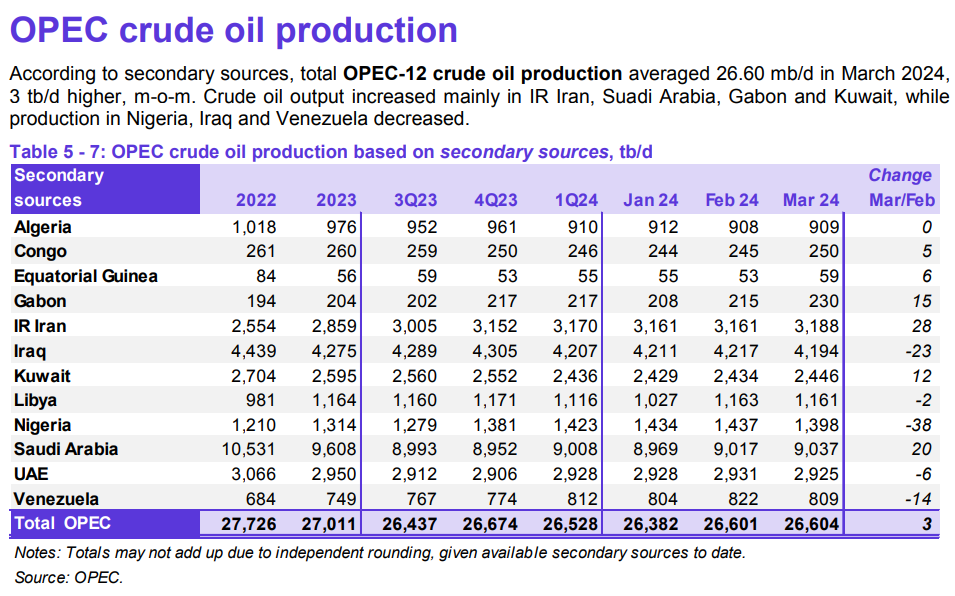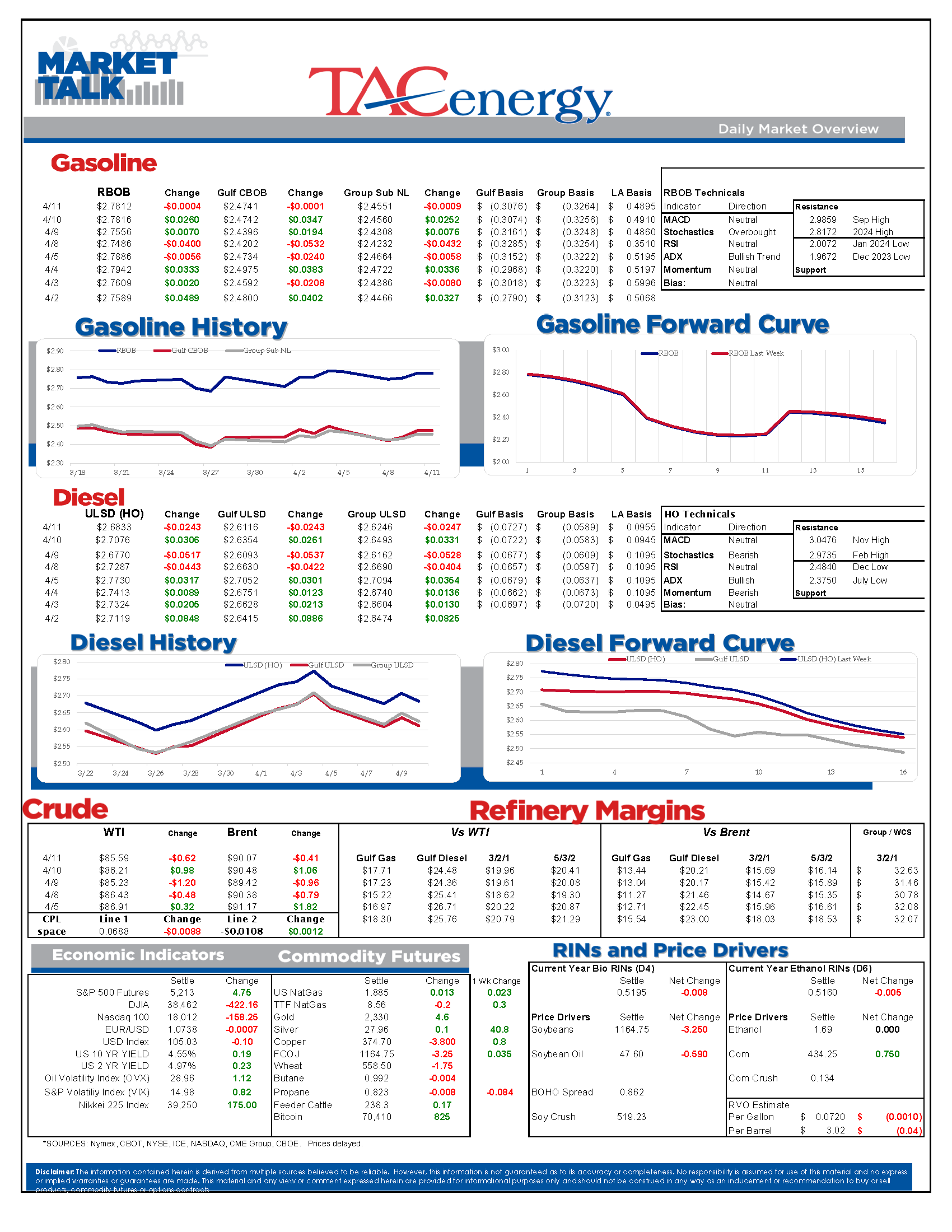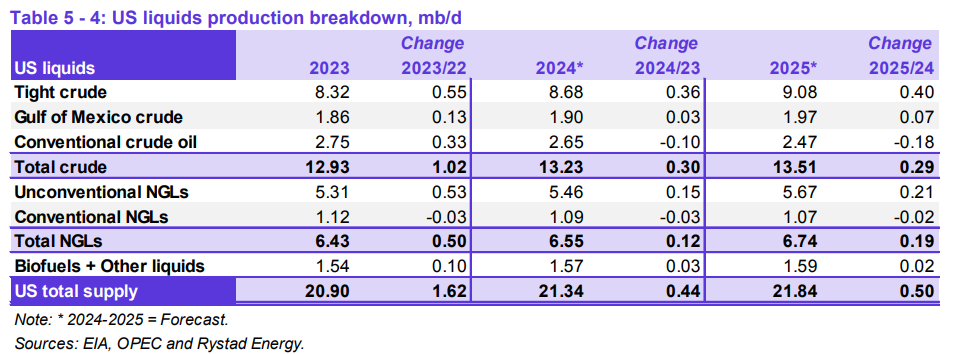Diesel Prices Continue To Be The Weak Link In The Energy Chain

Energy prices are ticking modestly lower this morning, despite warnings from the US that an Iranian attack on Israeli interest is “imminent” and reports of weather induced refinery outages, as demand fears seem to be outweighing supply fears temporarily. Diesel prices continue to be the weak link in the energy chain with both the DOE and OPEC reports giving the diesel bears reason to believe lower prices are coming.
The March PPI report showed a lower inflation reading for producers than the Consumer Price Index report, leading to an immediate bounce in equity futures after the big wave of selling we saw yesterday. To put the CPI impact in perspective, a week ago Fed Fund futures were pricing in an 80% chance of an interest rate cut by the FED’s July 31 meeting, and today those odds have shrunk to 40% according to the CME’s FedWatch tool.
OPEC’s monthly oil market report held a steady outlook for economic growth and oil demand from last month’s report, noting the healthy momentum of economic activity in the US. The cartel’s outlook also highlighted significant product stock increases last month that weighed heavily on refining margins, particularly for diesel. Given the US focus on ULSD futures that are deliverable on the East Coast, which continues to have relatively tight supply for diesel, it’s easy to overlook how quickly Asian markets have gotten long on distillates unless of course you’re struggling through the slog of excess supply in numerous west coast markets these days. The OPEC report noted this in a few different ways, including a 33% decline in Chinese product exports as the region simply no longer needs its excess. The cartel’s oil output held steady during March with only small changes among the countries as they hold to their output cut agreements.
If you believe the DOE’s diesel demand estimates, there’s reason to be concerned about domestic consumption after a 2nd straight week of big declines. The current estimate below 3 million barrels/day is something we typically only see the week after Christmas when many businesses shut their doors. We know the DOE’s figures are missing about 5% of total demand due to Renewable Diesel not being included in the weekly stats, and it’s common to see a drop the week after a holiday, but to lose more than a million barrels/day of consumption in just 2 weeks will keep some refiners on edge.
Most PADDs continue to follow their seasonal trends on gasoline with 1 and 2 still in their normal draw down period, while PADD 3 is rebuilding inventories faster than normal following the transition to summer grade products. That rapid influx of inventory in PADD 3 despite robust export activity helps explain the spike in premiums to ship barrels north on Colonial over the past 2 weeks. Gasoline also saw a sizeable drop in its weekly demand estimate, but given the holiday hangover effect, and the fact that it’s in line with the past 2 years, there’s not as much to be concerned about with that figure. While most of the activity happens in PADDs 1-3, the biggest disconnect is coming in PADDs 4 and 5, with gasoline prices in some Colorado markets being sold 50 cents or more below futures, while prices in some California markets are approaching 90 cents above futures.
Severe weather sweeping across the southern US knocked several units offline at Motiva’s Pt Arthur plant (the country’s largest refinery) Wednesday, and it seems likely that Louisiana refineries will see some disruption from the storm that spawned tornadoes close to the Mississippi River refining hub. So far cash markets haven’t reacted much, but they’ll probably need more time to see what damage may have occurred.
News & Views
View All
Energy Futures Are Caught Up In Headline Tug-O-War This Morning
Energy futures are caught up in headline tug-o-war this morning with Canadian oil production concerns and a positive US GDP report trying to push prices higher while sinking Chinese demand worries and Gaza ceasefire hopes are applying downward pressure. The latter two seem to be favored more so far this morning with WTI and Brent crude oil futures down ~45 cents per barrel, while gasoline and diesel prices are down about half a cent and two cents, respectively.
No news is good news? Chicago gasoline prices dropped nearly 30 cents yesterday, despite there not being any update on Exxon’s Joliet refinery after further damage was discovered Wednesday. Its tough to say if traders have realized the supply situation isn’t as bad as originally thought or if this historically volatile market is just being itself (aka ‘Chicago being Chicago’).
The rain isn’t letting up along the Texas Gulf Coast today and is forecasted to carry on through the weekend. While much of the greater Houston area is under flood watch, only two refineries are within the (more serious) flood warning area: Marathon’s Galveston Bay and Valero’s Texas City refineries. However, notification that more work is needed at Phillip’s 66 Borger refinery (up in the panhandle) is the only filing we’ve seen come through the TECQ, so far.
Premiums over the tariff on Colonial’s Line 1 (aka linespace value) returned to zero yesterday, and actually traded in the negatives, after its extended run of positive values atypical of this time of year. Line 1’s counterpart, Line 2, which carries distillates from Houston to Greensboro NC, has traded at a discount so far this year, due to the healthy, if not over-, supply of diesel along the eastern seaboard.
Click here to download a PDF of today's TACenergy Market Talk.

WTI And Brent Crude Oil Futures Are Trading ~$1.50 Per Barrel Lower In Pre-Market Trading
The across-the-board drawdown in national energy stockpiles, as reported by the Department of Energy yesterday, stoked bullish sentiment Wednesday and prompt month gasoline, diesel, and crude oil futures published gains on the day. Those gains are being given back this morning.
The surprise rate cut by the People’s Bank of China is being blamed for the selling we are seeing in energy markets this morning. While the interest rate drop in both short- and medium-term loans won’t likely affect energy prices outright, the concern lies in the overall economic health of the world’s second largest economy and crude oil consumer. Prompt month WTI and Brent crude oil futures are trading ~$1.50 per barrel lower in pre-market trading, gasoline and diesel are following suit, shaving off .0400-.0450 per gallon.
Chicagoland RBOB has maintained its 60-cent premium over New York prices through this morning and shows no sign of coming down any time soon. Quite the opposite in fact: the storm damage, which knocked Exxon Mobil’s Joliet refinery offline on 7/15, seems to be more extensive than initially thought, potentially extending the repair time and pushing back the expected return date.
There are three main refineries that feed the Chicago market, the impact from one of them shutting down abruptly can be seen in the charts derived from aforementioned data published by the DOE. Refinery throughput in PADD 2 dropped 183,000 barrels per day, driving gasoline stockpiles in the area down to a new 5-year seasonal low.
While it seems all is quiet on the Atlantic front (for now), America’s Refineryland is forecasted to receive non-stop rain and thunderstorms for the next four days. While it may not be as dramatic as a hurricane, flooding and power outages can shut down refineries, and cities for that matter, all the same, as we learned from Beryl.




